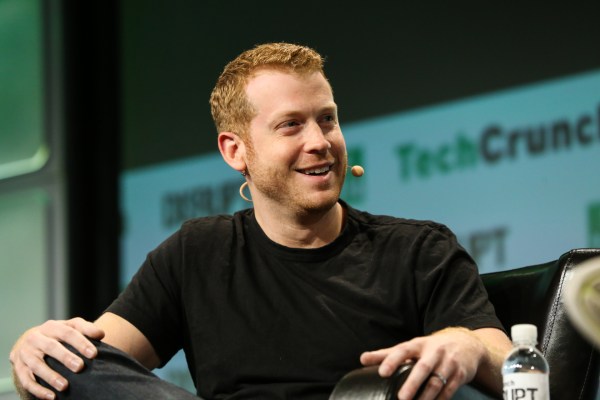General Motors snapped up Silicon Valley-based Cruise Automation for more than $1 billion earlier this year with plans to plant its self-driving tech inside its own car brands.
It was a fine move for GM, which has been aligning itself with several automotive ventures over the past year — including a partnership with Lyft, acquiring assets from the now defunct rideshare competitor Sidecar and launching its own rideshare service Maven.
Cruise founder Kyle Vogt came onstage today at TechCrunch Disrupt to chat about the GM deal and his plans to become a key player in the automated driving space under the major car manufacturer.
“Ultimately what we want to achieve with self-driving cars is to deploy it at scale,” Vogt said. “You can’t do that by retrofitting cars one by one.”
GM and its many partnerships will help Cruise get there faster and cheaper, according to Vogt, who was careful to mention GM’s partnership with Lyft was key in getting the customers and infrastructure needed to get there.
But Vogt also doesn’t think we won’t truly see the benefit in automated driving until we remove humans altogether. “Humans are inherently erratic,” he said. “You don’t unlock the true potential until it’s truly self-driving, get the humans off the road.”
Cruise launched three years ago when driving sans-human seemed like something that would happen 20 years down the road. We’re not there yet, but truly self-driving cars are now much closer than we think, according to Vogt.
He’s particularly confident about his position in the space with the new resources from a bigger, more established company. Cruise is now working with Maven and Lyft and can place its technology within the 7 to 8 million connected vehicles in Chevy’s OnStar program, thanks to the GM deal.
GM is not the only vehicle manufacturer planting its flag in this technology. Ford, Audi, Toyota and pretty much every major U.S. vehicle maker seems to be making moves here. And a big hurdle now is finding the talent to help build these driving systems.
“But it’s a question of going with a company where your work will see the light of day,” Vogt pointed out.
[gallery ids="1387047,1387068,1387067,1387066,1387065,1387064,1387063,1387046,1387039,1387040,1387041,1387044,1387045,1387038"]
He also agreed the nanodegree Udacity announced yesterday at Disrupt that was created to help certify more engineers in building automated vehicles would be a good start, but they’ll need “a little more than that,” he said. “…like a background in computer engineering.”
But, as Vogt pointed out, GM has made some key moves that will help position them at the forefront of the autonomous driving market — adding that a big part of the self-driving future is in ridesharing.
Lyft, Uber and others stand to gain from an aging population of drivers who may not be able to continue driving themselves but still need to get around. Vogt says he is focused on safety and making transportation more accessible to these senior members and mentioned Lyft was going to play into those plans.
Vogt doesn’t think that means America’s love affair with car ownership is going away anytime soon. “They’ll co-exist for a while,” he said.
But will we see our first self-driving cars through Lyft? “We’ll have to wait and see,” Vogt said.
